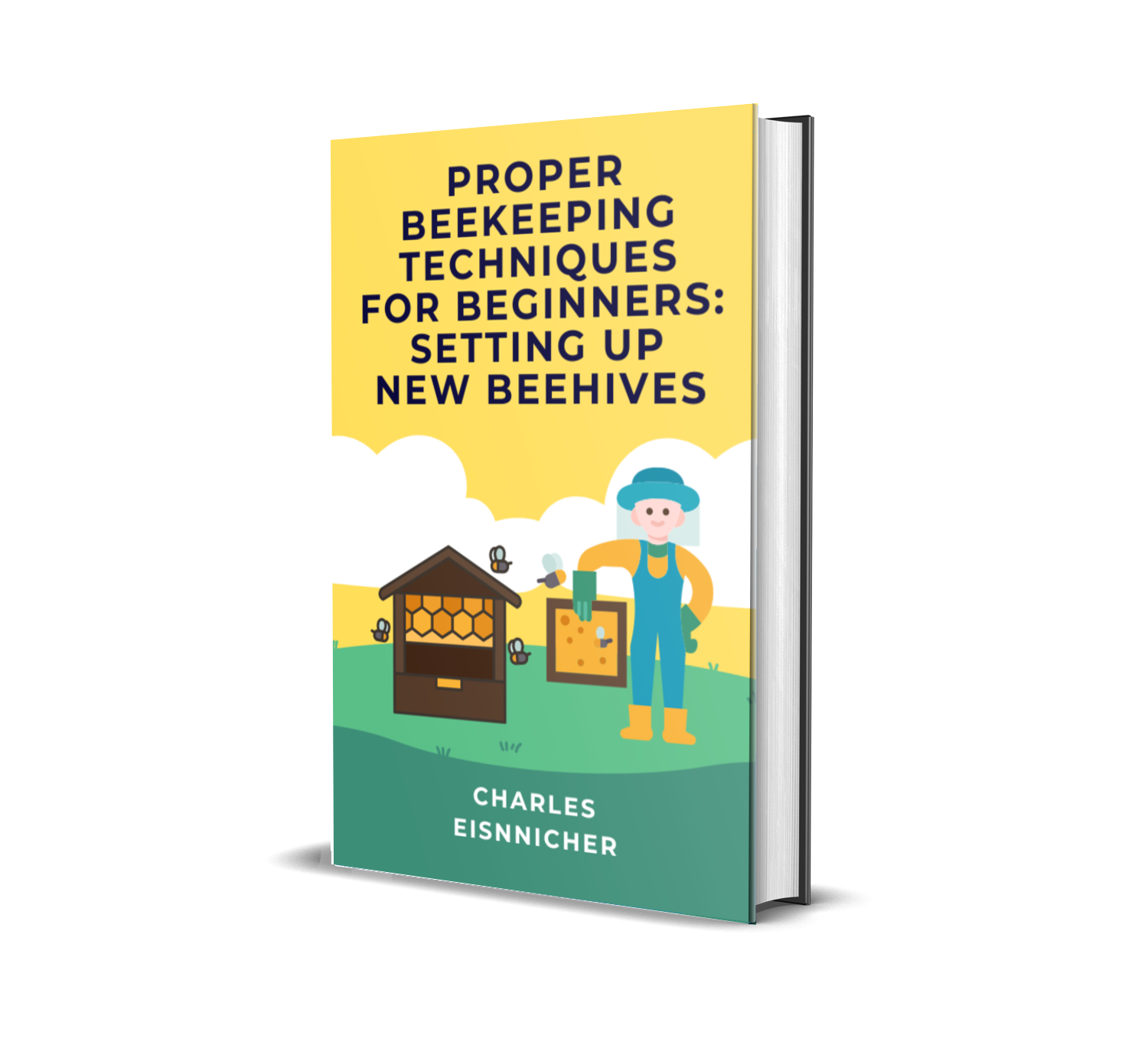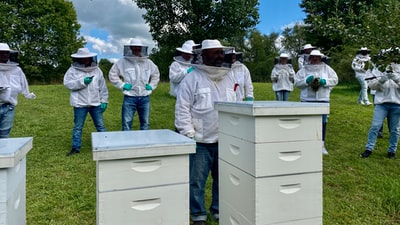Are you a nature and science enthusiast looking for a unique hobby to enjoy? Have you ever considered beekeeping? If so, you have come to the right place! Beekeeping is becoming a popular form of animal husbandry and provides numerous benefits in many aspects of life. Getting started increasing bee populations can be a challenging process, but the effort is worth it.
This article will provide a comprehensive overview of the steps needed to launch your beekeeping venture.
Starting a home beekeeping operation provides a fun, rewarding experience that begins with a journey of fantastic exploration. Beekeeping not only has several physical health benefits, but also has noted mental and environmental advantages.
In this article, we will delve into the necessary steps to properly start a sustainable home beekeeping operation, including the necessary equipment, safety considerations, and inspections. By taking the time and effort to establish a successful home beekeeping business, benefits that range from harvesting delicious honey to bolstering the local environment are attainable.
Table of Contents
Necessary tools and supplies for beekeeping
Beekeeping requires special tools, supplies, and protective gear. The most important items are a beekeeper suit, hat and veil, smoker, hive tool, brush, and protective gloves.
The suit, hat, and veil are necessary to avoid accidentally being stung. The smoker is used to create smoke to calm the bees.
The hive tool loosens frames, scrapes away burr comb, and pries apart hive bodies. The brush removes bees gently from frames and clothing.
The protective gloves serve as a physical barrier to prevent stings. Collectively, these items create a safe environment to harvest honey and other products derived from bees.
What to look for in the ideal location for a hive
When searching for the perfect site to house a beehive there are some important considerations. First, the area should be free from extreme weather conditions such as winds that are too strong, frequent rain or snow, and intense temperatures or sudden fluctuations in temperature.
Secondly, the beehive should have access to a fresh water source nearby and sunny area that provides plenty of flower options for the bees to forage. Additionally, the location should be ideally situated for observation and ease of maintenance as the beekeeper.
Finally, the area needs to be at least 100 feet away from public pathways and access, as well as areas of frequent human activity. Finding an ideal spot for the beehive will set the foundation for a successful colony in the years to come.

Get A Free Downloadable Ebook To Teach You How To Set Up New Beehives
Give Me My Free eBookAdvantages of keeping bees
Bees are incredibly important for our planet and have many advantages that cannot be ignored. Keeping bees can help boost your local ecosystem and great for us humans as well.
When a beekeeper cares for honeybees, they are providing habitat for wildlife, providing the pollinators needed for nearby gardens and farms, and the honey and pollen collected from the hives can be sold to supplement income. Keeping bees also improves yields for crops and can provide a reliable source of honey for beekeepers to enjoy.
On top of that, beekeeping is a fun hobby with practical rewards and a sense of purpose.
Knowing what type of bees to purchase
When you are considering purchasing bees, it is important to consider what kind would best suit your needs. Depending on where you are located and in what season, there are a number of bee species to choose from.
Many beekeepers recommend native species of bees because they tend to be better adapted to local climates and conditions. Solitary bee species are also a popular choice, as they require less effort and space than a conventional honey bee hive.
Seasonal summer bees such as mason and bumble bees can be useful for pollinating crops and providing honey production. Whatever species you choose, be sure to purchase bees from a reputable supplier.
Installing the hive and frames
Installing a hive can be quite the task. It requires measuring the area to ensure proper size and placement.
Holding frames are then used to set the hive on, putting the frames at least three feet off the ground. The types of materials used depend on the personal preference, however they must be strong enough to withstand the environment.
The hive must be level from side to side, using shims as needed to assist. With the proper setup, the frames can now be installed, followed by the hive cover.
This could seem like a daunting task at first, but with the right knowledge and careful execution, it can be a rewarding experience.
Introducing bees to the hive and successfully establishing a colony
Introducing bees to a new hive is the first step to successfully establishing a colony. The bees should be provided with an ample food source, comb foundation, and hive entrances.
Establishing a colony can take several weeks and involves the transfer of a nucleus colony, often referred to as a “package”, from the supplier into the new hive installed at the apiary. When transferring the nucleus colony, the queen bee from the package should be introduced to the hive in a queen cage to ensure she is recognized as the leader of the colony.
Queen cages contain a candy plug to provide nutrition to the queen while she becomes acclimated to the hive. Upon successful introduction of the queen, the remaining bees from the package should be shaken directly into the hive.
To properly establish the colony, the new bees should be provided with plenty of room to begin building their new home. In time, their colony should grow, and their population should begin to thrive.
Understanding the seasonal cycle of the hive
Understanding the seasonal cycle of the honey bee hive is essential for successful beekeeping. In the Northern hemisphere, the cycle mirrors the phases of the year.
In the Spring, the hive becomes active as the flowers start blooming and the queen bee begins laying eggs. Honey production increases throughout the summer and into the fall when the hive will start to forage for pollen and re-store the hive for colder winter months.
During the winter, the bee colony’s activity slows down, and the hive hunkers down with the workers taking shifts to keep the warmth of the hive. If a beekeeper is successful, the hive will have enough food and a thriving population heading into the next cycle of the season.
Maintaining the hive and caring for the bees
Good beekeeping starts with good hive maintenance. Beekeepers should regularly inspect their hives to assess the health of the colony and ensure that the bee’s resources, such as water and food, are adequate.
It is also important to check for diseases and pests, and to make sure the hives are structurally sound. In addition, beekeepers need to protect their colonies from weather and temperature extremes by providing shade or insulation.
Finally, the beekeeper should regularly assess the queen bee’s health, as she is a critical factor in the colony’s success. When caring for bees, beekeepers need to remember that bees need a safe, clean space in order to thrive.
Harvesting honey on a safe and responsible manner
Harvesting honey from beehives can be a rewarding experience for beekeepers, as long as it is done in a responsible manner. Appropriate safety measures should be taken to avoid disturbing the colony.
For instance, wearing protective gear such as a veil and gloves prior to entering an apiary is key to keep away from stings. Additionally, smokers and hive tools should be used only when necessary and when the bees appear calm.
Moreover, it is essential that the proper equipment such as a centrifugal honey extractor is employed when the honey is harvested. As long as proper safety and management techniques are employed, harvesting honey on a safe and responsible manner is not only achievable, but also enjoyable.
Common issues with beekeeping and how to recognize and address them
Beekeeping is an art of working with bees and harvesting their products, but there are some common issues that can arise that are essential to be aware of. Common issues include diseases, pests, and parasites like Varroa mites, which can lead to an infestation of the hive.
To recognize these issues it is important to perform regular inspections of the hive to look for signs of dying bees, mites, and other pests. Additionally, it is important to monitor honey and pollen levels to determine the health of the hive.
To address common issues, it is essential to provide a balanced diet, proper ventilation, and keep away from overcrowded hives. It is also important to identify and treat weak colonies quickly and to keep the hive clean.
Utilizing good beekeeping principles and adequate prevention can help ensure a healthy bee population.
Takeaway
Congratulations! You just took your first step towards beekeeping and learning how to start raising bees. The journey to becoming a beekeeper won’t be easy, but by taking the right actions and doing the necessary research you have the chance to become an expert beekeeper.
Now, equip yourself with the necessary protective gear and make sure to research the native bee species in your area, then you’re ready to start your beekeeping journey.
Charles

Get A Free Downloadable Ebook To Teach You How To Set Up New Beehives
Give Me My Free eBook








